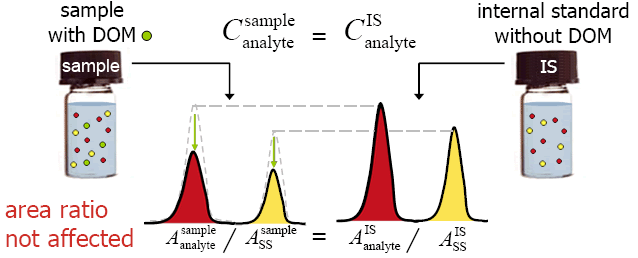Matrix effects and IS calibration
Example: an interferent in the sample (e.g., dissolved organic matter) suppresses the response of the detector to the analyte in the sample relative to the response of the detector to the analyte in a standard, which does not contain the interferent

Matrix components equally suppress the signals of analyte and surrogate standard, such that the ratio of their signal areas remains constant.
Hence, in contrast to ES calibration, internal standard calibration accounts for matrix effects.





 Matrix effects and IS calib.
Matrix effects and IS calib.
